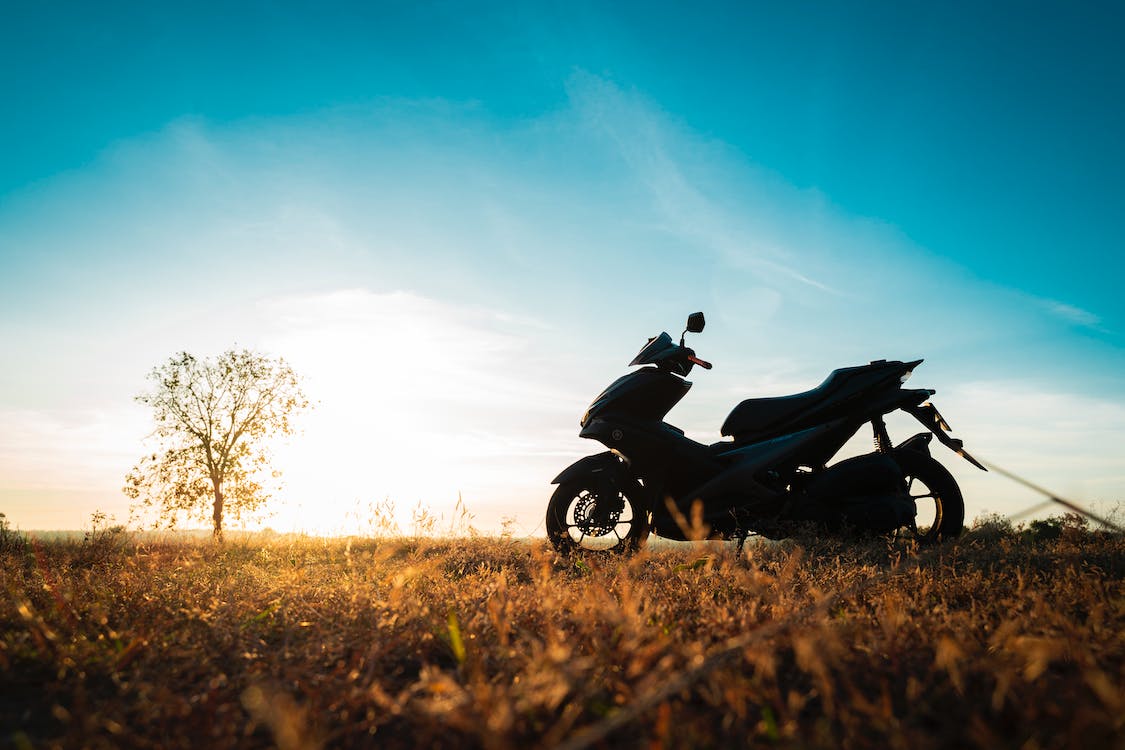Riding a motorcycle is, by all reasonable definitions, something slightly crazy. Insane might be a better word. Consider it from a non-rider’s point of view, in that we dress up in brightly colored thick clothing, then sit on a vehicle with two wheels with a tank of extremely flammable liquid over a hot, reciprocating piece of metal, and we think it’s a great idea. We are all, in a way, slightly nuts for riding.
Yet, those out there that are non-riders may never understand the truth about riding, in that it is a form of rolling meditation. While they are distracted by any of a number of things while driving their cars and trucks, we riders are focused and aware only on the act of riding. While those non-riders might be feeling stressed after having a bad day, the stress for us melts away because we simply don’t have the time while riding to think about it.

Yet, there are still times when that focus can be broken. It could be as simple as letting your mind wander slightly, to having a near-miss that overloads your mind with anger. It could be taking a corner too fast and panicking as you drift ever closer to the outside curb. Whatever the case, what is important is regaining your focus, your mindfulness, rapidly as you are still rolling along at some speed. This article will hopefully give you some insight into how to do so, which is in and of itself an important skill to learn about riding.
Building Confidence (Without Being Overconfident)
It is true of almost any skill, be it motorcycle riding to carpentry or art, that there is a rapid peak of confidence, aka climbing Mount Stupid, that then gets shattered down to a deep valley of Despair, followed by a slow, more progressive buildup of confidence. It even has a scientific name, the Dunning-Kruger Effect. It happens to everyone, so you are not alone when you have your trip into the valley of despair. For me personally, it happened in my first full week of being licensed to ride, as I had let my mind wander and came within about 11.5 inches of having my head knocked clean off by a truck’s wing mirror.
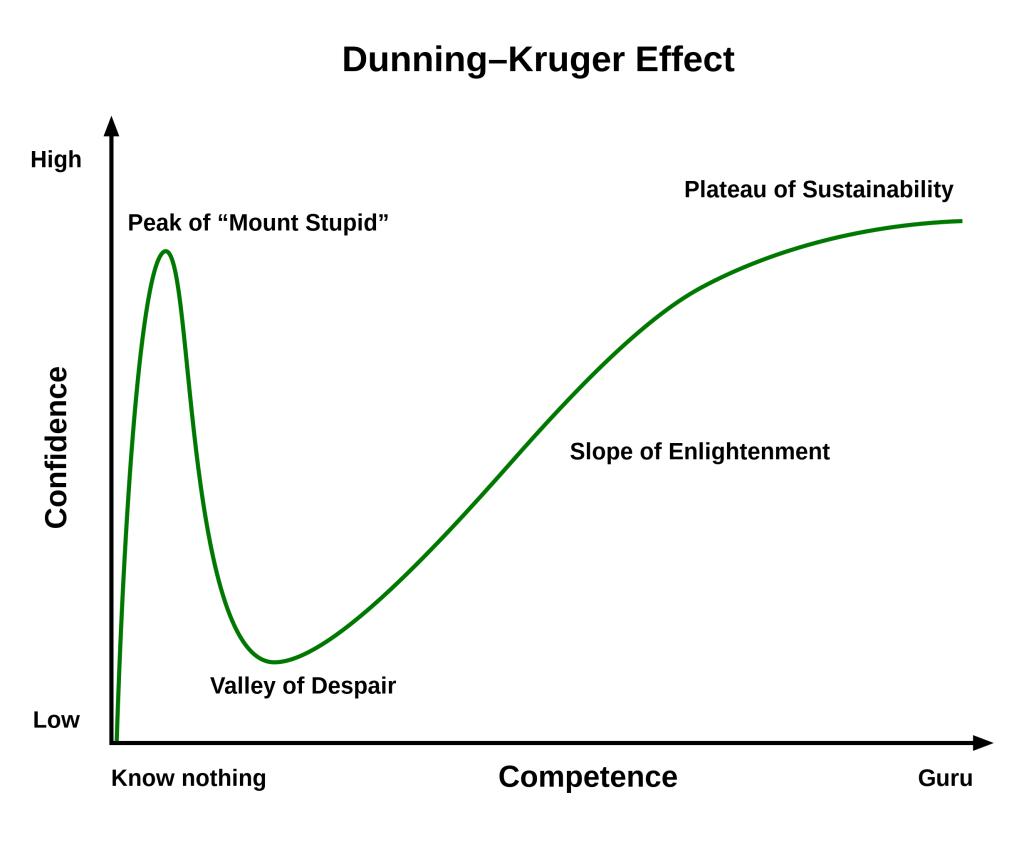
In truth, some people experience a much gentler crest and trip into the valley, while others may find their descent into that deep chasm much later on in their riding career. Yet, to a person, that valley lets us look up at the mountain ahead, except this time with a route planned out to achieve the summit.
“You Know Nothing, Jon Snow”
The first thing that you can do as a newer rider to build confidence is, of all things, admitting that you know nothing. I am not meaning that your head is completely void of any knowledge regarding motorcycles and the act of riding, I am meaning in the sense that you are at the foundation of your riding skills. The start line of a life-long endurance race, if you will. There is a reason that the MSF is known as the Motorcycle Safety Foundation, as it is both a group of likeminded instructors and schools, and is a clever play on words about the lessons on how to build a foundational set of skills to constantly improve upon. If you have a solid foundation, you’re already halfway there to building confidence.

Improvement comes with practice. Find an empty parking lot or quiet road (as long as you don’t have a ridiculously loud aftermarket exhaust on your bike), and practice moving off, shifting to second, braking, shifting down to first with a rev match, and coming to a stop. Practice turning at 3 MPH, then 5 MPH, then 10 MPH. Do figure-eights and slaloms in the parking lot, practice your u-turns and 90 degree turns. When riding to and from your practice area, be mindful about keeping your eyes up and scanning 10 to 20 seconds down the road, and make sure you also know what’s going on behind you with shoulder checks and mirror glances.
This is something you will be doing the entirety of your riding career, as a neglected skill can diminish your experience with it. That is why the Five To Survive rule, or whatever your own interpretation of it is, should be always in your mind.
Recognizing The Signs Of Overconfidence
The second thing is to realize and recognize when you’re starting to climb the first peak to overconfidence, which can also be labeled as being cocky about your skill level. This does require you to be brutally honest with yourself, to look inwards and not try to excuse anything or lie to yourself. For some, this first climb happens after a month of riding, without any incidents, when you look at the corner you’ve taken hundreds of times and go “Yeah, I can take that 10 MPH faster,” and end up drifting wide towards the curb as you start to panic. For others, it can be complacency in trusting your bike and brakes as you come off the freeway, and then realize that you’re a lot closer to your lean in point than you realize because you lost focus for that split second, and end up grabbing way too much brake, way too quickly.
Again, I will stress that you are not alone in encountering this point. We have all found it at some point in our riding careers. Some have it happen to them in their first week of being licensed (guilty as charged), others don’t reach it until they’re 3 to 5 seasons in. As long as you can recognize that climb and peak of overconfidence before it becomes dangerous to you and others, you can ride the slope down into the valley of despair, probably better labelled for the mindful rider as the valley of uncertainty, much more gently.
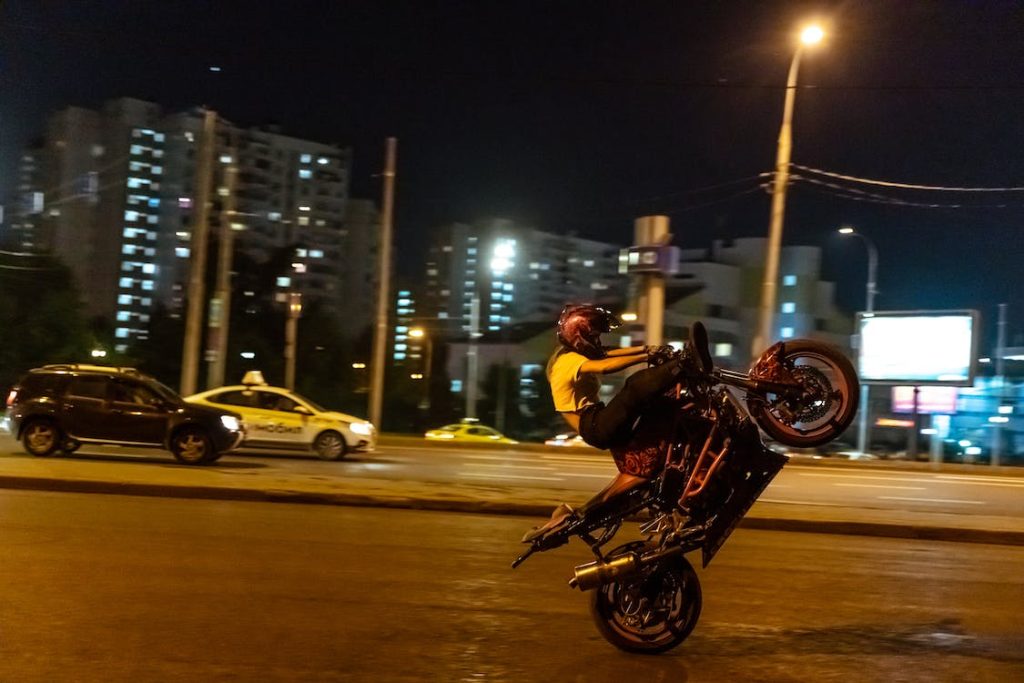
For those riders that are of the sportbike posse, this is three times more important. Sportbikes, be they sport tourers, supersports, superbikes, or any of the other “sport” monikers, are designed for two things: speed and handling. You have more than likely seen those riders, sometimes labeled as “squids,” that treat every road like it’s their own personal racetrack while wearing a tank top, shorts, and flipflops. Not mincing words, I often refer to those riders as “idiots,” because riding like that is an idiotic way to massively increase the chances of a rather unpleasant encounter with the asphalt.
That is also why I call the little mental gateway in my mind between desire and reality the “Idiot Filter.” I know I am not the next incarnation of Valentino Rossi. I know that I haven’t turned the wheels of a bike in anger on a racetrack. So when I recently had the opportunity to ride a superbike with the most power of any motorcycle I’ve ever ridden, I didn’t crank it wide open. My brain was wondering what it would feel like to give it some wrist, but my wrist remained calm and controlled. I highly recommend installing your own idiot filter between your brain and wrist, and you will find that you just might enjoy riding that much more, because you’re mitigating the risk of incidents or injury.
Mitigation Of Risk
This brings up the third point about how to build confidence, in that you need to be aware about how you can mitigate the risks that come with riding. All of us at BBM, myself included, are proponents of ATGATT: All The Gear, All The Time.
When I ride, I want to arrive home safely and in one piece, with my skin intact, so I wear my gear. I have a wet/cold weather set (DryStar and GoreTex lined), a moderate temperature set (base layer armor and a jacket that flows decent air), and a hot/extreme hot set (mostly high-denier mesh).
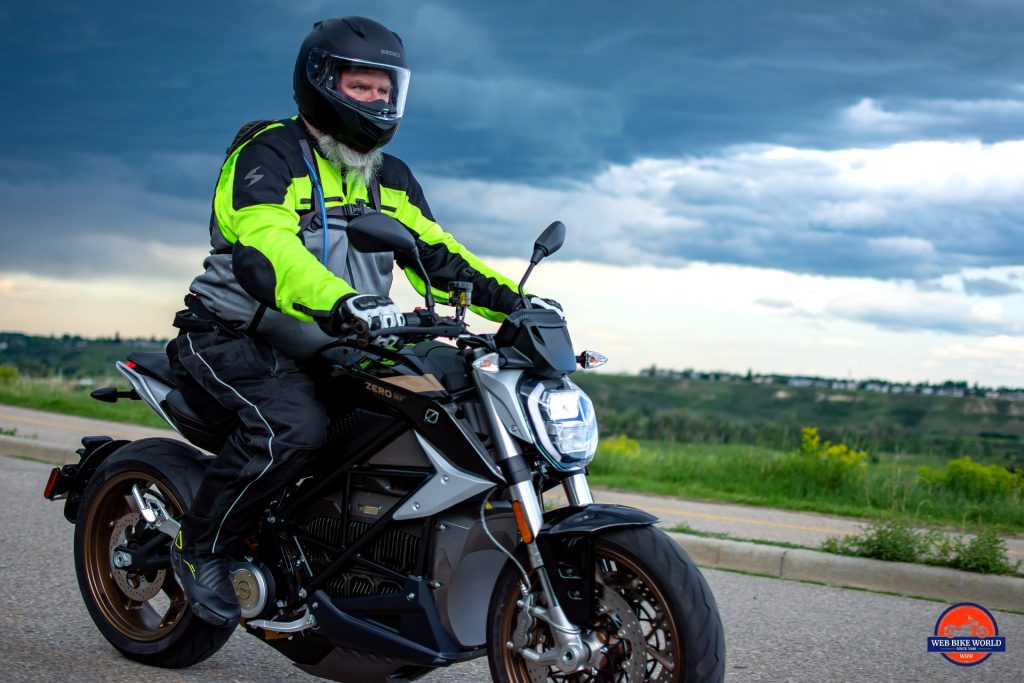
I don’t feel the need to rip along in traffic, weaving in between other vehicles, nor do I need to take the off-ramp at 100 KPH when I can just as safely get around it at 50 KPH. I don’t need to crank my wrist to the bump-stop to push my engine wide open, as the street is not a race track.
By keeping that mindfulness about how I ride, I have yet to have any serious encounters with the pavement, and more often than not, other drivers seem to respect a rider that isn’t trying to slalom around them at ridiculous speeds.
This is probably the most important part about the riding meditation mentioned in the introduction. Do you really need to arrive at the stop light 15 seconds faster than the car you dodged around, as you will both arrive at the red light anyways? Do you really need to be dragging your knee on the freeway on-ramp at 80 MPH, when, because of the nature of motorcycles having excellent power to weight ratios, you can get up to 70 MPH just as easily in the merge lane as the corner ends? Remember: Slow, Look, Lean, Roll… that last bit is rolling on the power as you exit the corner, and is how to both straighten the bike up and achieve the speed limit in one smooth motion.
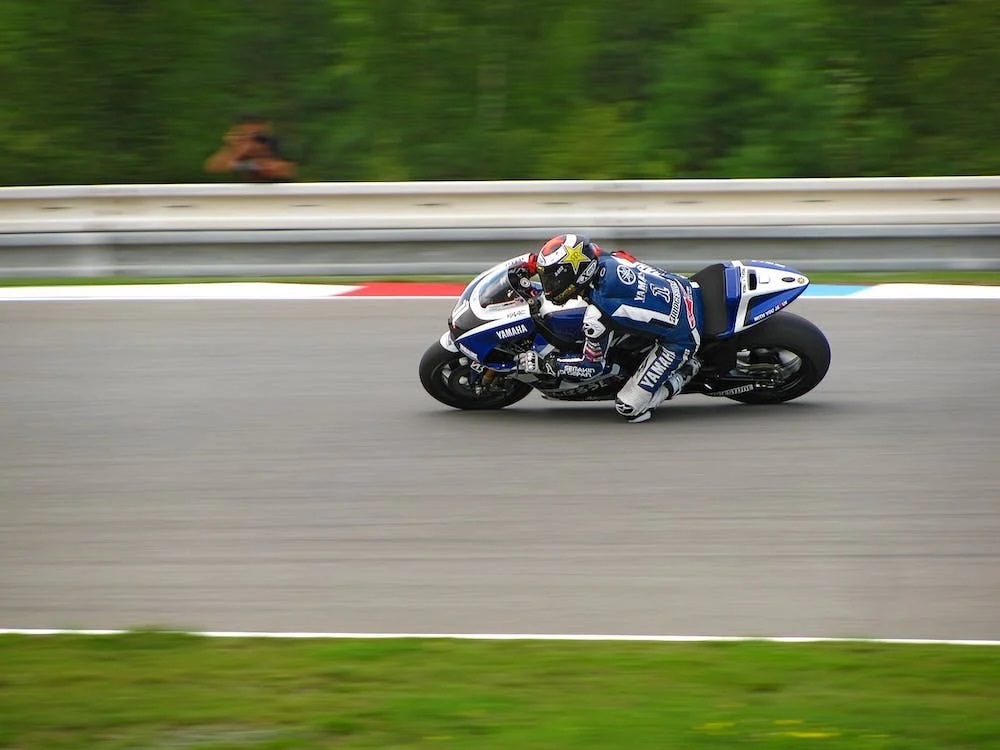
If you absolutely have an itch to go as bonkers fast as you can, invest in a leather race suit, proper track- or motorsport-rated gear, and go to a track day. The US has thousands upon thousands of tracks, small, big, international, even FIA/FIM Grade One for top tier motorsport. When there aren’t big events happening, these tracks stay afloat through offering track days or racing schools. The street is not a race track. A race track is a race track. To go fast on a bike, take it to the track, sign the waivers, learn as much as you can, and have fun!
While these are three tenets I learned about building confidence, the fact of the matter is that there are literally thousands of ways to learn every day how to ride your bike better. This is by no means a comprehensive, “Hold ye these three holy tenets as thy only course to build with” list. This is just the experiences of one person, who is one of you, a beginner rider. Your mileage may vary, but as long as you learn, don’t get complacent or cocky, and are conscientious of how you ride, you will build that house of confidence one brick at a time.
There are, however, some situations where even with all the confidence in the world, fate/luck/whatever life-randomizer-you-believe-in has other plans for you. It is during those times that the true Zen of motorcycle riding applies, that of forgiving others.
The Art Of Forgiveness
You may be looking at the screen and saying “What the hell is he talking about?” The fact of the matter is that on any road, anywhere in the world, at some point someone is having a really bad day. They can be stressed from work, going through personal issues, or any number of things, and it has frayed their nerves to the point that a cat hair landing on them can cause them to snap.
Yes, I am talking about road rage.
Forgiving Others & Avoiding Road Rage
With the prevalence of action cameras, dash cameras, and the ability to upload videos almost instantly to the internet, we have all seen incidents of road rage. Sometimes it’s car on car, sometimes it’s bike on bike, and more often than not, it’s bike on car. If you don’t know about the term “emphatic mirror adjustment,” it is when a rider, after feeling they’ve been slighted, will speed past the side of a car and as they do so, punch the wing mirror hard enough to break it.
This, ladies and gentlemen of the motorcycling community, is not a smart thing to do.
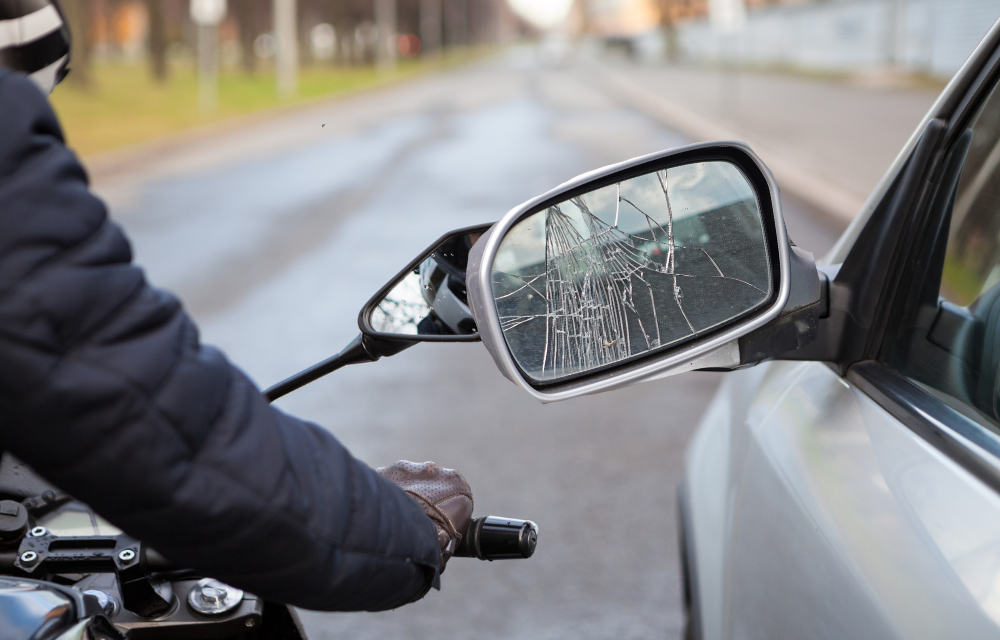
I concede that there are times where a motorcyclist has legitimately had a near miss, from a car changing lanes without looking and the rider having to toss out the anchor to avoid being hit, to getting rear ended by inattentive drivers at a stop sign or red light. To borrow the phrase as well as put my only real curse in this article, “Shit happens.” It is at these points that forgiveness is crucial.
If the incident is minor, such as the rear ending just being a bump on the rear tire, as long as you inspect it and there is no damage to either vehicle, it’s something that is easily forgivable. If the cutting off was close but there was no overlap, back off the throttle while gently pressing the rear brake just enough to have your brake light come on, and let your safety margin build back up to the 2 to 3 seconds following distance a bike should have. Then, once you’re safe again, realize that maybe you were in that drivers’ blind spot, or they didn’t do a proper shoulder check, or were so distracted by a bad day or were changing the track on their infotainment system, and shrug it off. You have control of your bike and your safety, and if you focus on the why and the how that driver cut you off, you’re taking away your focus from being on riding. Forgive and forget, and keep on riding.
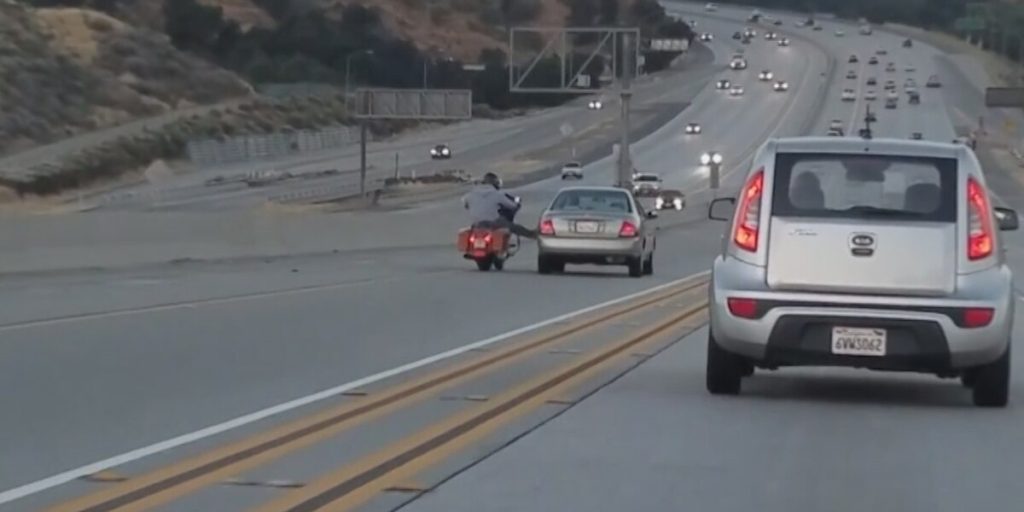
If there is an incident with damage, I’m not saying you should forgive the other driver their responsibility to exchange details and insurance, and get your bike repaired via insurance. What I am saying is that to avoid it escalating into a confrontation: Speak calmly and professionally; De-escalate as much as possible; Take pictures of the incident, the road where it happened, damage to both vehicles, their license plate, all of that.
Yelling, screaming, getting all up in someone’s face only invites conflict. There have unfortunately been many situations, with video evidence all over the internet, where it has devolved into an unnecessary fist fight.
Forgiving Yourself
The other part of forgiveness is, as it says above, forgiving yourself. You will inevitably make a mistake at some point while riding, doing something that makes you literally want to plant your face in your hand and shake your head in disbelief. The most common thing that happens with this is when and/or if you drop your bike.
Understanding that you are new to the world of motorcycling is key. You can protect your bike with an engine cage, frame sliders, and the like, but as the common saying goes, “Dropping your bike is a right of passage.” There are some that disagree with that, and haven’t once dropped their bike, but the vast majority of riders will at the very least tip sideways at a stop once in their riding careers. Some can catch themselves and have the strength in their legs to push the bike back upright, others will tip, ending up on their side.
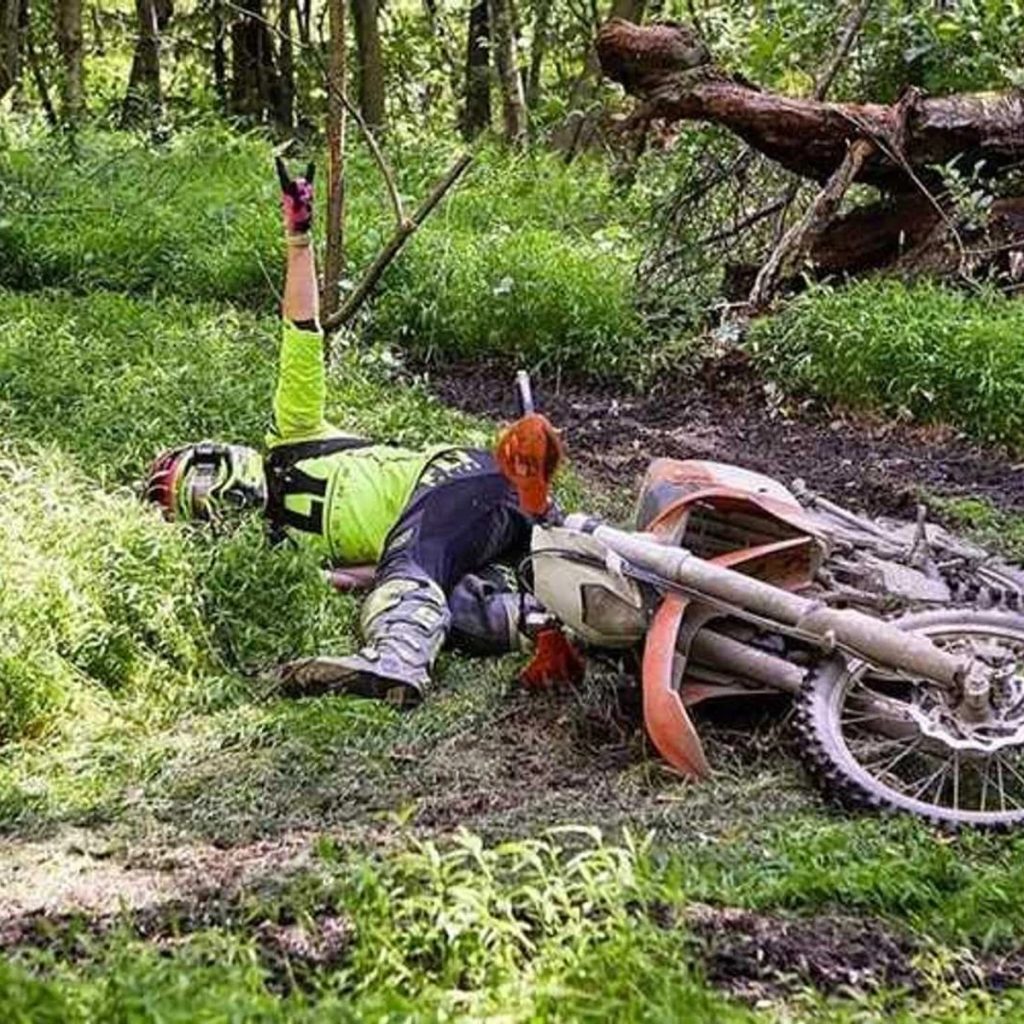
I’ve done it once myself, so I’m not immune to tipping. I put my boot down, and didn’t see a large stone among a small gravel patch, and my boot rolled off it as I put my weight on my left leg. My leg slipped in towards the bike, the bike and I went over, and I honestly burst out laughing after I flicked the kill switch while I was on my side. The reason I laughed is because I immediately forgave myself. I stepped on a rock because I was looking up and paying attention, not down at my foot, so there was nothing really I could do, and hence no need to be angry at myself.
Build your confidence slowly and progressively. Forgive others and forgive yourself. Combine both of those with riding defensively, and you’ll more than likely have a great time on two wheels
Defensive Riding Tips & Tricks
Since this article is aimed at the newer rider, how to ride defensively might not be readily apparent. There are tons of guides out there on the internet on it, so for this section, I thought it would be best to provide a list of the major points.
- Ride like you’re invisible
- The most cliche of all the defensive riding tips, but also the most important. Cars are, by their very nature, about 4 to as much as 8 times wider than a bike. At a distance of just about a hundred feet, if someone were to look at you and then give you a thumbs up at their eye level, your bike and you would be entirely hidden by their thumb.
- Wearing brightly colored gear that contrasts with natural colors, such as neon yellow, bright red, light blue, and the like.
- Don’t sit in a blind spot. Back off the throttle a little, or if you feel it is safe to do so, crank on a little throttle to move through the blind spot. This is the most common cause of getting cut off and near-miss sideswipes. Those drivers should perform a shoulder check before changing lanes, but many don’t.
- Always have an escape route
- While this may be more difficult in traffic jams on the freeway, when traffic is flowing, always keep a space in the other lane, or if a multi-lane road to either your left or right, that you can do an emergency lane change into. If that means you need to vary your throttle a little, do it gently and progressively so the traffic behind you has time to adjust.
- Mitigate risks & hazards
- Make sure the road, your bike, and yourself are fit to ride. If it’s a monsoon, you’re tired, and your bike has sport slick tires fitted, don’t go riding.
- Anticipate the movements of other drivers. If a car creeps to the left or right of the lane up ahead, it is possible they are positioning for a lane change and that creeping over is their hands following their eyes as they check their side mirror. If you see a signal and then the lane change happens, you will have already had the time to back off the throttle to build your buffer space, or accelerate through the blind spot, before they even start the maneuver.
- It really shouldn’t need to be here, but don’t ride under the influence. Just… don’t.
- Always signal intentions
- Bikes have a little indicator switch on the left button box for a reason. Use it.
- If you want to be double sure, use arm signals as well.
- Shoulder check twice. Glancing over your shoulder can be interpreted as just keeping track of traffic. If you glance, look ahead, then glance over your shoulder again, that is much more easily interpreted as “this rider is going to change lanes.”
- Understand & observe your local traffic laws
- Some states allow for lane filtering in stopped traffic, others allow for lane splitting in moving traffic. Those two things are completely different, however, so make sure you know which is allowed by your state, if at all.
- Don’t speed. Stay at the speed limit. This is important because the faster you go, a) you are breaking the law and b) you will have less time to react to risks and hazards ahead. Speeding more than 50 MPH over the limit is almost always an on-the-spot suspension of your license and your bike might be impounded as well. Add on top of that some pretty hefty fines, and it’s really just not worth it to speed.
- Be aware & mindful of your riding
- Keep your head up, eyes to the horizon, scanning 10 to 20 seconds down the road
- Check your mirrors every few seconds to keep track of what’s behind you
- Ride within your abilities. Slow down as much as you need to to safely navigate a corner, and stay in the rightmost lanes if you’re at all anxious about riding in the fast lane. You know your abilities and confidence level, ride within them

